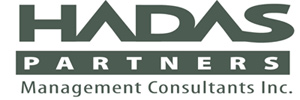An earlier blog that covered the importance of stakeholder willingness, also covered the various parts of a good organizational change management program. Often people don’t consider all these parts, but they do understand the need for communications on a project.
Change communications for a project is different from regular communications that happens in a company. If you approach change communications as simply an extension of regular communications the company is doing already, you could run into some trouble.
The main problems you’ll encounter have to do with inflexibility. The tendency will be to use current media channels which have their own publishing schedule. An example is a quarterly newsletter. However, your project timing may not align with this publishing schedule. You may need to get out an important announcement somewhere in between.
 Another problem is that regular company communications covers many subjects, and your project would be just one of those many. So you could find yourself competing to get on the front page of the newsletter with Nancy and Frank who are retiring after 35 years with the company.
Another problem is that regular company communications covers many subjects, and your project would be just one of those many. So you could find yourself competing to get on the front page of the newsletter with Nancy and Frank who are retiring after 35 years with the company.
The end result is that you will not communicate enough, and not frequently enough. And that’s a big problem.
So how are change communications on a project different from regular company communications? You need to understand these differences to know what to look for in a good communications plan (and a good person to manage that plan).
What is different about Change Communications on a Project?
 First of all, there are many more media channels needed than what is available in a status quo, operational environment.
First of all, there are many more media channels needed than what is available in a status quo, operational environment.
For example, in addition to publishing a quarterly newsletter, a company might make announcements through annual Town Hall events, periodic updates to their intranet site, and occasional special announcements from the desk of the CEO.
All of these are fine, and should be used as vehicles for project communications whenever it makes sense. However, in addition to these you may need:
- “Show & Tell” education session to demonstrate new technologies
- Small group “Lunch & Learn” sessions to provide updates or educate people on new processes
- Key Message/”Elevator Speech” communication package for leaders so that everyone “sings from the same song sheet”
- Periodic talking point bullets (can be on a slide or two) for directors and managers to deliver at their department meetings
- Targeted emails from sponsors (these should be selectively sent otherwise people will start to ignore them)
- more frequent Town Hall meetings, off-cycle newsletters, etc.
Basically, the difference is similar to you going from managing a four piece rock band to running an orchestra.
Plan and Align your Communications Activities
Second of all, because the effort is much bigger, you need a detailed communication plan just for your project.
What does a communication plan look like? Simple! You can use an Excel spreadsheet, and put the following across the columns at the top:
– who the intended audience is;
– what the key messages need to be;
– who the sender or the ‘voice’ will be;
– what vehicle or medium will you use to deliver the content;
– who will develop the content;
– by when;
– who will distribute the message on the senders behalf;
– when;
– and finally, how will you measure that it was effective?
Thirdly, this communication plan must support other project activities. The timing must align with the timing of other key project activities. That is again why you cannot rely regular company communications.
To use a very simplistic example, announcements supporting upcoming training sessions should occur early (but not too early) and often enough to ensure maximum attendance. No sense in sending one urgent all employee email two days before the first training course starts. You’ll just get everyone upset.
To continue the musical metaphor, if the project milestones are the rhythm, communications activities are the melody. Things must be in synch, otherwise it’s chaos. So you have to align your communications activities with the project plan and schedule.
A Final and Important Difference
Last of all, communications activities and events need to be a combination of planned, structured events and spontaneous, flexible activities to deal with urgent situations.
That means that you have to allow for flexibility in the plan so that you can improvise. Yes, now we’re talking about a jazz orchestra!
The reason for this is that things can and do change on a project. To use the previous training example, if suddenly things get pushed out by two weeks on your project, training will need to be pushed out by two weeks.
That means that suddenly the communications plan is out of synch. So, you need to push out communications activities related to training as well.
But there could have bigger problems that will require communication activities that you didn’t, and couldn’t, plan for. For instance, that training that is now delayed gets pushed into an awkward period such as year-end holiday period, summer vacation season, or a key peak activity period for your industry. That will get people flustered.
In addition, just delaying the project could lead to some mistrust and anxiety in the organization. People may start to suspect that something is not right with the project, or maybe even the company. So then you may need additional messaging to deal with that.
 To wrap it up, for the final crescendo finale (last musical metaphor, promise), make sure you have your own, robust communication plan that uses all of the media channels available and then some, is very detailed, is aligned to your project milestones, and is flexible enough for you to improvise when you have to.
To wrap it up, for the final crescendo finale (last musical metaphor, promise), make sure you have your own, robust communication plan that uses all of the media channels available and then some, is very detailed, is aligned to your project milestones, and is flexible enough for you to improvise when you have to.
See you next time!












